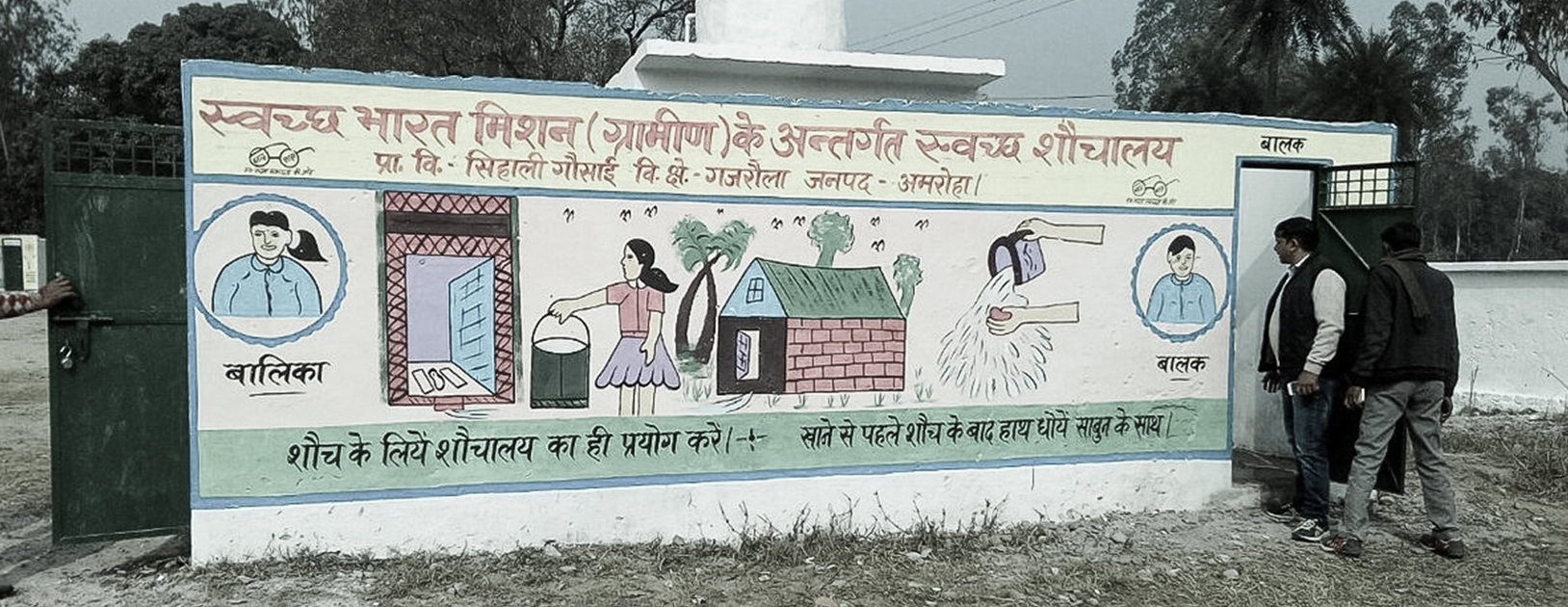
Swachh Bharat Mission (Gramin) 3 Years On
22 November 2017
October 2 this year marked the third anniversary of the Swachh Bharat Mission (SBM), the Government of India’s (GoI) flagship programme to achieve the goal of total sanitation by 2019. In the discussion below, Avani Kapur and Devashish Deshpande give us a sense of the reality on the ground for Swachh Bharat Mission (Gramin).
With only two more years to go to meet targets, what are we seeing as priorities for Swachh Bharat Mission (Gramin)? Have they changed?
Devashish: Let us state upfront that there are in fact two ways of discerning priorities. The first is what the officially stated government priority is – available through the programme norms and guidelines. But there is also the priority that gets translated on the ground – what has been carried forth by implementers based on their own capacity and understanding. There is often a significant gap between the two. The recently released, updated implementation guidelines indicate that the priorities of the mission are witnessing a forceful reorientation towards the initial ideal of a community-led, sustainable movement. These revisions also seem to address several of the concerns raised by media and civil society and signal the right intentions.
More specifically, the guidelines include detailed instructions on the monitoring and verification protocol, as well as administrative capacity issues like manpower and trainings. They are also more focussed on the sustainability of the ODF (Open Defecation Free) status beyond mission activities , such as, what is being called ODF ++; issues related to toilet technology; and the need for greater attention to behaviour change with interpersonal communication as a means of bridging the access usage gap.
These are not new focal areas but a more explicit statement of principles the mission has always espoused. That they are reinforced three years into the five-year mission period suggests that the Centre sees the gaps in the programme, and is urging mid-term course correction. However, in the context of the current push to meet targets within a specified deadline, unless we find ways to strengthen implementation, there is a danger that these guidelines and principles will dissipate as they travel along the bureaucratic channels to the ground.
The government has consistently maintained that the objective of the mission is not only construction but behaviour change. With seven states already declared ODF and others striving for the status, do we have data available on toilet usage?
Devashish: This is the biggest gap in the existing monitoring framework of the sanitation sector. As we mentioned last year, collecting usage data is complicated, and quantitative data in this regard is often unreliable. At present the NSSO (National Sample Survey Office at the Ministry of Statistics and Programme Implementation) is an important source of toilet usage numbers. However, their approach to capturing it is fraught with problems.
For example, the wording of the question itself is a concern. It asks whether ‘members are using latrine’. This comes across at once as leading and accusatory and is likely to bias the respondent into answering in the affirmative. Further, no attempt is made to talk to other members of the household and verify what the respondent answers on their behalf. As RICE institute also notes, how you ask the question, whom you ask, how many times you ask, all have implications on the answer. There are also seasonal variations – usage tends to change during the rainy seasons, for example. We ourselves faced this problem in our survey when we got different answers to the question – where do you normally go versus where did you go today!
Avani: The other, more current source of tracking usage is the Swachh Survekshan, conducted annually by the Quality Council of India on behalf of the central government. Here too, however, the same shortcomings can be noted. Their approach is even more curtailed and they only ask the respondent ‘does any member (of the household) defecate in the open sometimes?’
The implications of this approach are evident from numerous stories on the gaps between access and usage. The concern that ODF Panchayats are not truly ODF has been flagged by AI and others previously. Recognising this, the guidelines have laid out a detailed monitoring and verification process and need for continued engagement with ODF Panchayats and villages after declaration, rewards for Panchayats that perform well, and other measures to ensure that official declarations do not become an end in themselves. Moreover, this time the guidelines focus on the use of independent qualitative studies in order to ascertain the status of usage. This is definitely a positive step. More focus needs to be given to collecting regular, independent data through different methods on tracking usage and compliance to policy.
For more on toilet construction under Swachh Bharat Mission (Gramin), the status of awareness raising for behaviour change, and challenges to the programme, visit: Centre for Policy Research.





